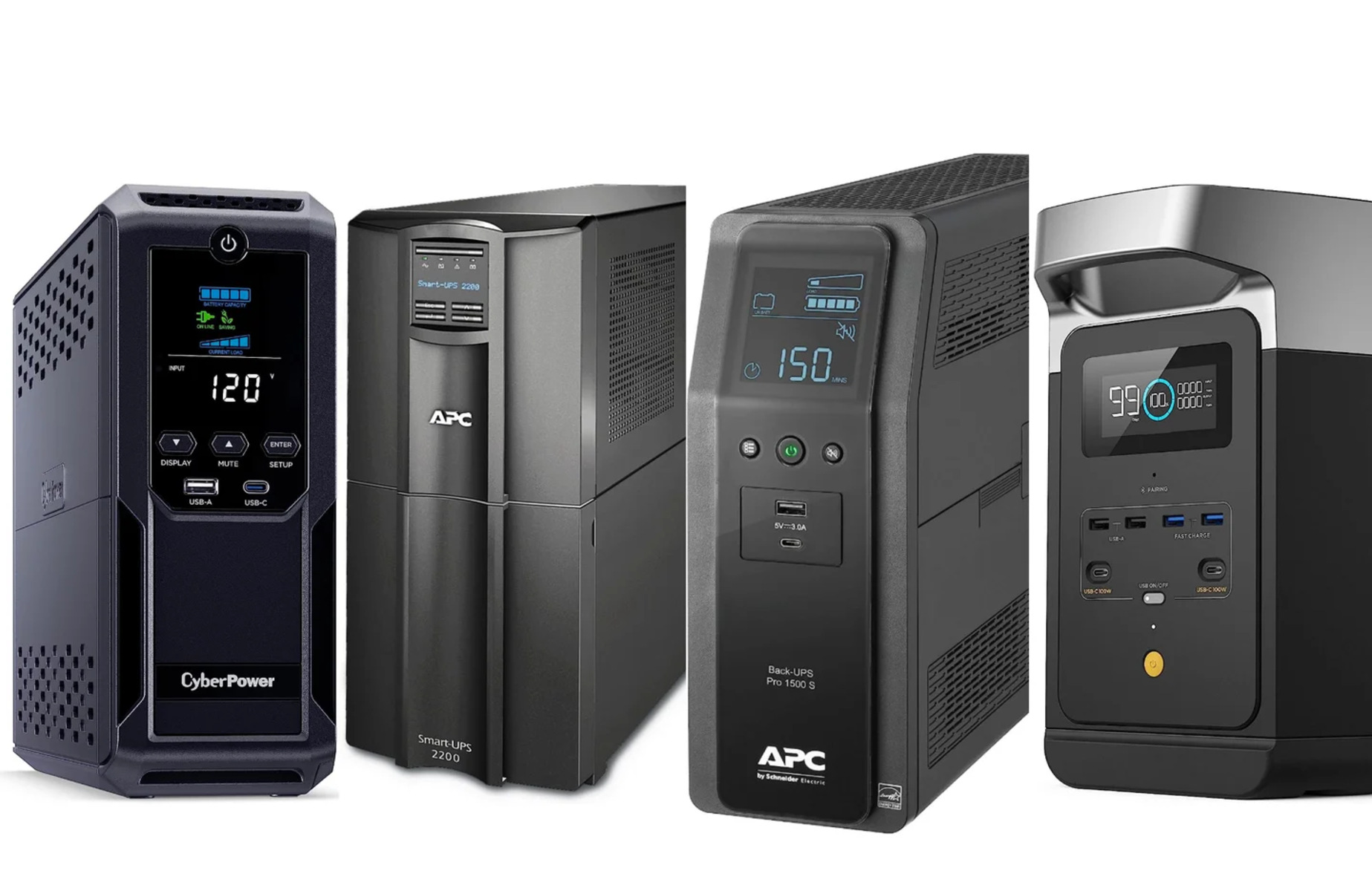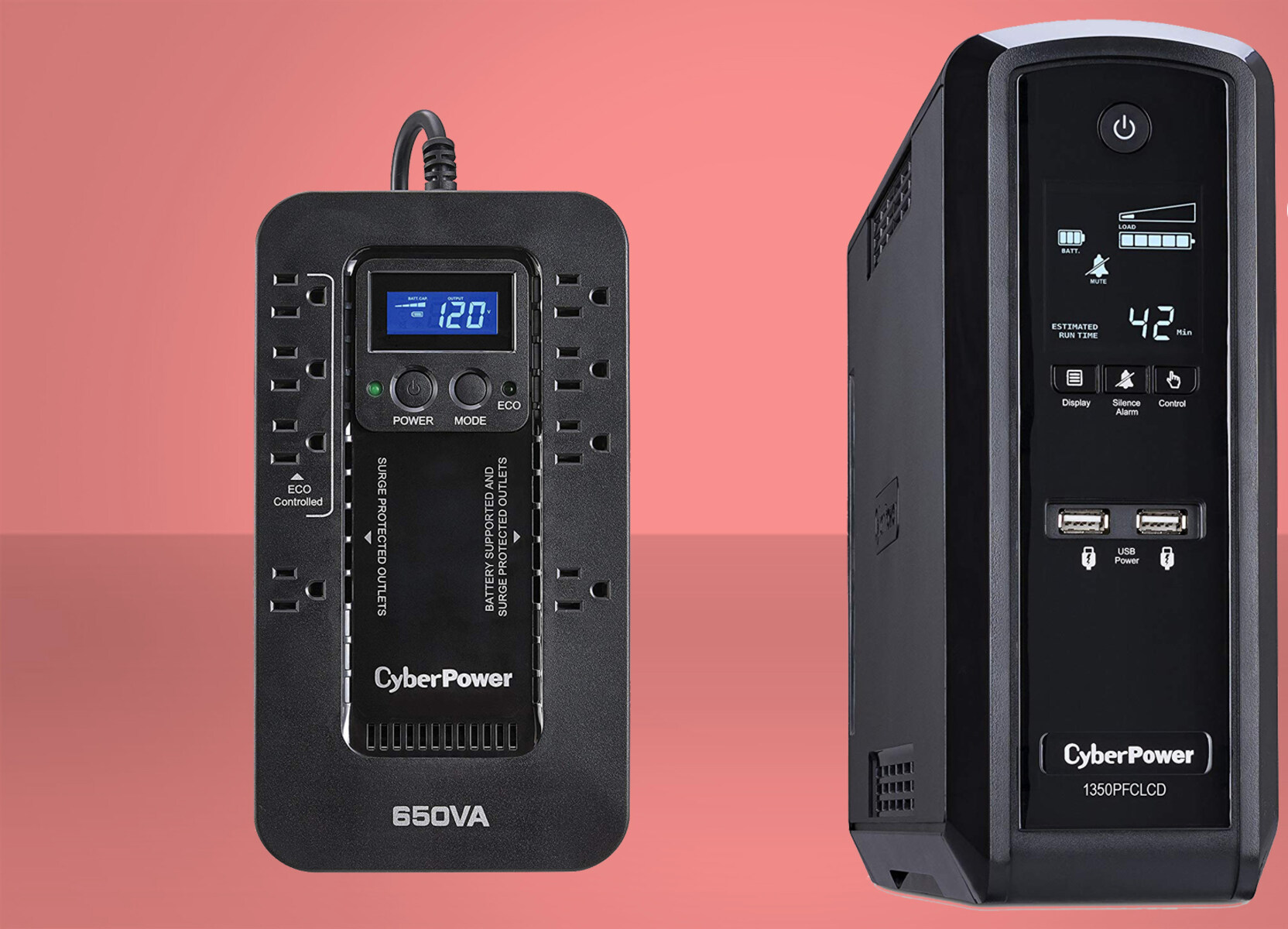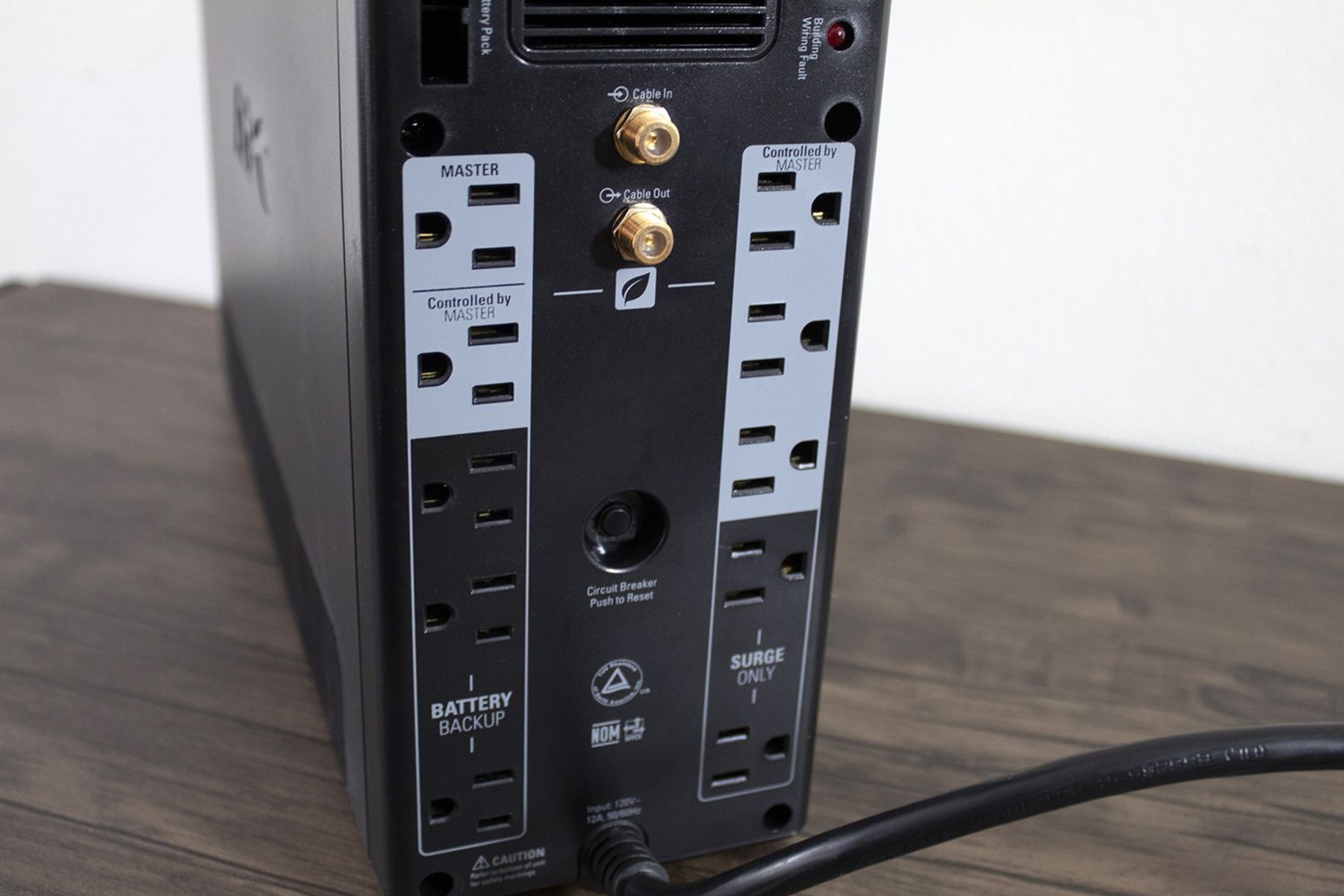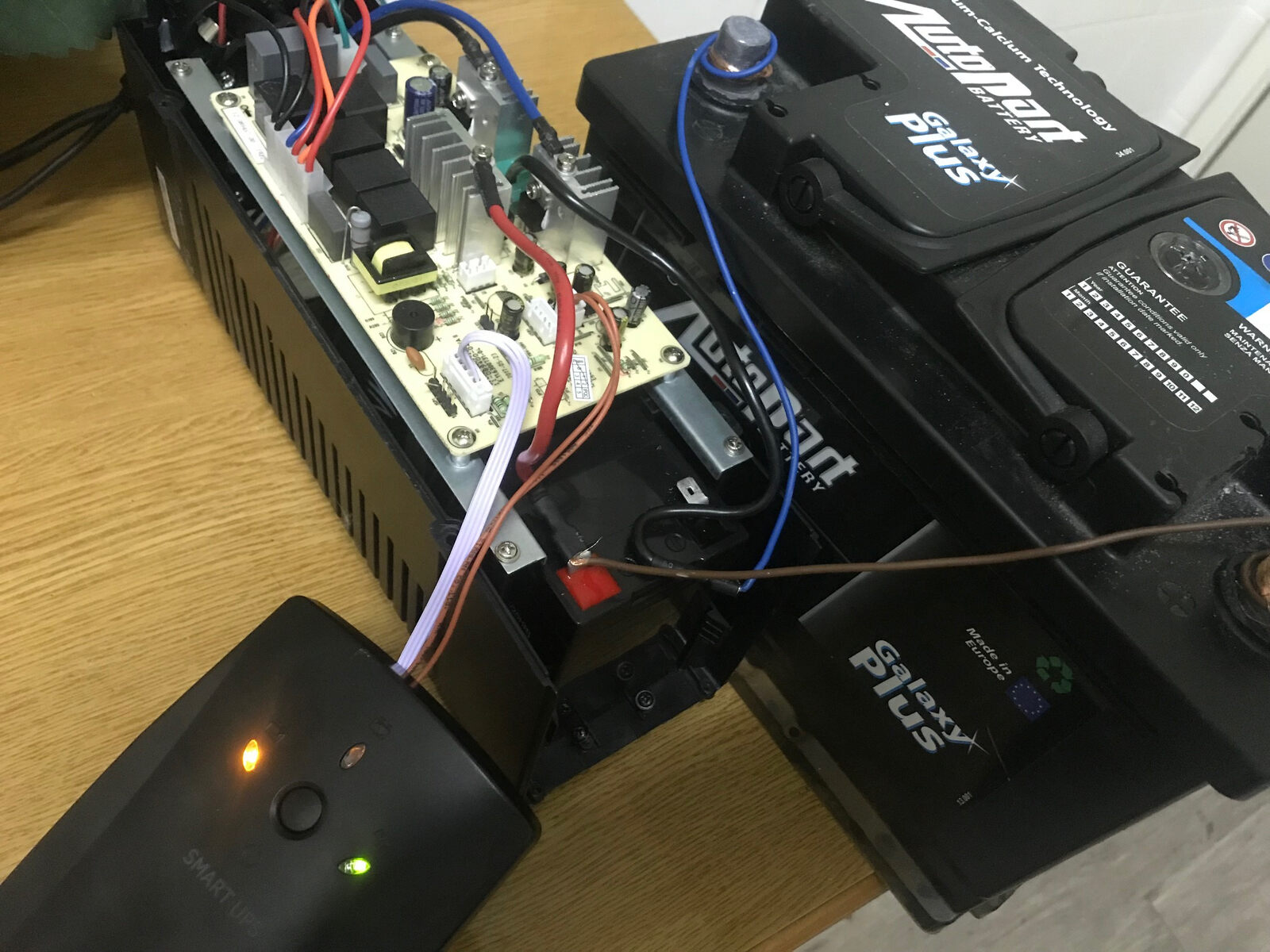Introduction
Welcome to our guide on how to select a UPS battery backup. In today’s digital age, power outages and fluctuations can cause significant disruptions to our daily lives. Whether it’s during a storm, a sudden power outage, or simply an unstable electrical supply, having a reliable UPS battery backup can protect your electronic devices and keep them running smoothly.
A UPS, or uninterruptible power supply, is a device that provides backup power to your electronic devices during power outages. It acts as a safeguard, protecting your valuable equipment from power surges, voltage spikes, and potential damage. Not only does it provide essential power during an outage, but it also ensures a clean and consistent supply of electricity, protecting your devices from unexpected power fluctuations.
However, with so many UPS options available in the market, selecting the right one can be a daunting task. The purpose of this guide is to provide you with practical tips and insights to help you make an informed decision when choosing a UPS battery backup.
Throughout this guide, we will discuss various aspects that you should consider, such as understanding the UPS basics, assessing your power requirements, determining the load capacity, exploring different types of UPS batteries, battery backup time, battery replacement, connectivity options, additional features to consider, and budget considerations.
By the end of this guide, you will have a clear understanding of the factors involved in selecting the right UPS battery backup solution for your specific needs. So, let’s dive in and explore the world of UPS battery backups, empowering you to make a smart and reliable choice.
Understanding the UPS Basics
Before diving into the specifics of selecting a UPS battery backup, it’s essential to have a solid understanding of the basic principles behind UPS technology. A UPS is composed of three main components: the battery, the inverter, and the rectifier.
The battery is the heart of a UPS. It stores electrical energy and provides power when the main power source fails. UPS batteries are typically rechargeable and come in various types, including sealed lead-acid (SLA) batteries, lithium-ion batteries, and gel batteries.
The inverter is responsible for converting the electrical current from DC (direct current) to AC (alternating current). This allows the UPS to deliver a consistent supply of AC power to your devices. In the event of a power outage, the inverter switches on automatically, providing the necessary power to your connected devices.
The rectifier is responsible for converting the incoming AC power from the wall outlet into DC power to charge the UPS battery. It ensures that the battery remains charged and ready for use in case of a power failure.
UPS systems also come with built-in surge protection capabilities. This feature safeguards your devices from harmful power surges caused by lightning strikes or voltage spikes in the electrical grid. Additionally, some UPS models offer voltage regulation, which ensures a stable and consistent power supply, even during fluctuations in the input voltage.
When selecting a UPS battery backup, it is crucial to understand the various power ratings associated with the device. The most important rating to consider is the VA (volt-ampere) or the Wattage rating. This indicates the maximum amount of power that the UPS can deliver to your devices.
It’s important to note that the power rating of your UPS should be higher than the combined power requirements of the devices you intend to connect to it. This ensures that your devices receive sufficient power during an outage and that the UPS operates within its optimal capacity.
Understanding these basic concepts of UPS technology will help you make an informed decision when selecting a UPS battery backup. In the next section, we will discuss how to assess your power requirements.
Assessing Power Requirements
Assessing your power requirements is a crucial step in selecting the right UPS battery backup. To determine the appropriate power capacity for your UPS, you need to consider the total power consumption of the devices you plan to connect to the UPS.
Start by making a list of all the electronic devices that you want to protect with the UPS. Include items such as computers, monitors, routers, modems, printers, and any other equipment that requires uninterrupted power. Take note of the power rating or wattage requirement for each device. You can usually find this information on the device’s label or in the user manual.
Add up the wattage of all the devices to calculate the total power load. It’s important to account for any future expansions or additions to your setup so that your UPS can accommodate them as well.
Next, consider any additional power requirements that may not be included in the device wattage. For example, if you have a computer system that requires a backup internet connection, you would need to include the power consumption of the modem and router in your calculations.
Keep in mind that certain devices might have a higher power requirement during startup or initial operation. This is known as the “surge” or “peak” power requirement. You should factor in these peak power loads when selecting a UPS to ensure it can handle the transient power spikes without overload.
Once you have determined the total power load, it is recommended to choose a UPS with a higher power capacity. This provides a buffer zone and ensures that your devices will receive adequate power during an outage.
Additionally, consider the runtime requirements for your devices. Runtime refers to the amount of time the UPS can provide power to your devices during an outage. It is influenced by factors such as the battery capacity, the power load, and the efficiency of the UPS. Determine how long you will need your devices to operate during a power outage and choose a UPS with a battery backup time that meets your requirements.
By accurately assessing your power requirements, you can select a UPS battery backup that will adequately support your connected devices and provide sufficient runtime during power outages. In the next section, we will explore how to determine the load capacity of a UPS.
Determining the Load Capacity
When selecting a UPS battery backup, it’s important to determine the load capacity that can handle the power requirements of your connected devices. The load capacity of a UPS refers to the maximum power load it can support without overloading.
To determine the load capacity, you need to consider the wattage or power rating of your devices, as well as any potential future expansions or additions to your setup. This will ensure that your UPS can handle the total power load without any issues.
Start by making a list of all the devices that you want to connect to the UPS. Include their power ratings or wattage requirements. You can usually find this information on the device’s label or in the user manual. Add up the wattage of all the devices to calculate the total power load.
Next, consider any additional power requirements that may not be included in the device wattage. For example, if you have a computer system that requires a backup internet connection, you would need to include the power consumption of the modem and router in your calculations.
It’s also important to factor in any potential power surges or peak power loads that might occur during startup or operation of certain devices. These power spikes can temporarily exceed the normal power load, so it’s crucial to choose a UPS that can handle these surges without overloading.
Once you have determined the total power load, it is recommended to choose a UPS with a higher load capacity. This provides a buffer zone and ensures that your UPS can handle the power requirements of your devices, even during peak loads or unexpected power surges.
Keep in mind that the load capacity and the runtime of a UPS are interconnected. As the load increases, the runtime decreases. Therefore, it is important to balance your power load requirements with the desired runtime during a power outage. Determine how long you want your devices to operate during a blackout and choose a UPS that can provide the necessary backup time.
By accurately determining the load capacity of your UPS, you can ensure that it can safely support your connected devices and provide reliable power backup in case of an outage. In the next section, we will discuss the different types of UPS batteries available.
Types of UPS Batteries
When it comes to UPS battery backups, there are several types of batteries available, each with its own advantages and considerations. Understanding the different types of UPS batteries can help you make an informed decision based on your specific needs.
1. Sealed Lead-Acid (SLA) Batteries:
SLA batteries are the most common type used in UPS systems. They are relatively affordable, reliable, and require little maintenance. These batteries are spill-proof and can be placed in any position, making them versatile for various UPS configurations.
2. Lithium-Ion (Li-ion) Batteries:
Lithium-ion batteries are becoming increasingly popular in UPS systems. They offer a higher energy density, which means they can provide more power in a smaller package. Li-ion batteries also have a longer lifespan and faster charging time compared to other battery types. However, they tend to be more expensive.
3. Gel Batteries:
Gel batteries are a type of lead-acid battery that uses a gel electrolyte instead of a liquid. These batteries are maintenance-free, have a longer lifespan, and are more resistant to extreme temperature fluctuations. However, they are typically more expensive than traditional lead-acid batteries.
4. AGM (Absorbent Glass Mat) Batteries:
AGM batteries are another type of sealed lead-acid battery. They use a fiberglass mat soaked in electrolyte to hold the acid in place. AGM batteries are maintenance-free, have a faster charging time, and can handle high discharge rates. They are often used in UPS systems that require high-power applications.
When choosing a UPS battery backup, consider the specific requirements of your devices, the desired runtime during an outage, and your budget. Each battery type has its own advantages and considerations, so it’s important to select the one that best fits your needs.
In the next section, we will discuss the battery backup time and how to determine the appropriate duration for your UPS.
Battery Backup Time
The battery backup time of a UPS is a crucial consideration when selecting a UPS battery backup. It refers to the duration for which the UPS can provide power to your connected devices during a power outage.
The battery backup time is determined by factors such as the capacity of the UPS battery and the power load of the connected devices. It is important to choose a UPS with a battery backup time that meets your specific needs.
Start by assessing the amount of time you would require your devices to operate during a power outage. Consider the criticality of your devices and the tasks you need to accomplish during that time. This will help you determine the minimum backup time you should look for in a UPS.
Keep in mind that the battery backup time is influenced by the power load. As the power load increases, the runtime decreases. Therefore, it is essential to balance your power load requirements with the desired backup time.
When selecting a UPS, consider the VA (volt-ampere) or wattage rating of the UPS, as well as the total power load of your devices. A higher power capacity UPS can typically provide a longer battery backup time. However, it is important to evaluate whether the backup time meets your specific needs and if it aligns with your budget.
It’s worth mentioning that the battery backup time can also be extended by incorporating additional external battery packs. Some UPS models allow for scalability, enabling you to add extra battery packs to increase the overall backup time.
Lastly, it is important to note that the battery backup time specified by the manufacturer is an estimate and can vary depending on factors such as the age and condition of the battery, the load on the UPS, and the efficiency of the UPS. It is advisable to account for some margin of error when determining the required backup time.
By carefully considering your backup time requirements and evaluating the power load of your devices, you can select a UPS battery backup that offers the appropriate battery backup time to keep your devices running during power outages. In the next section, we will discuss battery replacement considerations for UPS systems.
Battery Replacement
Battery replacement is an important aspect to consider when investing in a UPS battery backup. Over time, UPS batteries can degrade and lose their ability to hold a charge, diminishing the overall effectiveness of the UPS. Therefore, understanding the battery replacement process is essential in maintaining reliable backup power for your devices.
The lifespan of a UPS battery can vary depending on factors such as battery type, usage patterns, operating conditions, and maintenance practices. Generally, UPS batteries have a lifespan of 3 to 5 years. It is recommended to check the manufacturer’s guidelines and specifications for the specific UPS model you possess.
Some UPS systems have replaceable batteries, allowing you to easily swap out the old battery for a new one. In such cases, it is important to follow the manufacturer’s instructions for battery replacement, including the type of battery to use and the proper installation procedure. Make sure to purchase replacement batteries from reputable suppliers to ensure compatibility and reliability.
For UPS systems with sealed batteries, the entire UPS unit may need to be replaced when the battery reaches the end of its lifespan. In these cases, it is important to consider the overall cost of replacing the entire unit, including the battery, compared to the cost of purchasing a new UPS system.
Regular maintenance and monitoring of the UPS battery is also crucial. This includes visually inspecting the battery for any signs of damage or swelling and checking the battery’s voltage and charge levels. Some UPS systems come with battery health indicators or software that can assist in monitoring battery health and provide alerts when replacement is necessary.
It’s important to note that improper handling or disposal of UPS batteries can have detrimental effects on the environment. Always follow the recommended guidelines for battery disposal or recycling to ensure that the batteries are disposed of in an environmentally friendly manner.
By being mindful of the battery replacement process and the estimated lifespan of the UPS battery, you can ensure that your UPS is always operating at its optimal performance and providing reliable backup power to your devices. In the next section, we will discuss connectivity options for UPS battery backups.
Connectivity Options
When selecting a UPS battery backup, it’s important to consider the connectivity options available. UPS systems offer various ways to connect your devices, providing flexibility and compatibility with different setups and equipment.
1. AC Outlets:
The most common and straightforward connectivity option is through AC outlets. UPS systems typically come equipped with multiple AC outlets, allowing you to directly connect your devices using standard power cords. Ensure that the number and type of outlets provided by the UPS match your specific needs.
2. USB and Serial Ports:
Many UPS models feature USB and serial ports, which allow for direct communication and control between the UPS and your computer or server. These ports enable features such as automatic shutdown of connected devices during power outages and monitoring the UPS status and battery health through dedicated software.
3. Ethernet and Network Connectivity:
For larger setups or network-dependent devices, UPS systems with Ethernet or network connectivity options are available. These UPS models can be integrated into your network infrastructure, providing power protection and management capabilities for multiple devices and servers.
4. Remote Monitoring and Control:
Some advanced UPS models offer remote monitoring and control capabilities. Through a network connection or an internet-based management interface, you can monitor the status of the UPS, receive alerts and notifications, and remotely manage the UPS settings from anywhere.
It’s essential to consider the connectivity options that align with your specific requirements. Determine the devices you plan to connect to the UPS and ensure that the UPS provides the necessary outlets and connectivity ports to accommodate your setup. Additionally, check for compatibility with your operating system and any specialized software or management tools your organization may utilize.
When using connectivity options such as USB or Ethernet, ensuring that the necessary drivers, software, or configuration settings are installed and properly set up is crucial. Follow the manufacturer’s instructions and guidelines to establish a stable and reliable connection between the UPS and your devices.
By choosing a UPS battery backup with the appropriate connectivity options, you can seamlessly integrate it into your setup and effectively protect your devices from power interruptions. In the next section, we will discuss additional features to consider when selecting a UPS.
Additional Features to Consider
When selecting a UPS battery backup, there are several additional features that you should consider to enhance its functionality and usability. These features can provide added convenience, protection, and customization options to suit your specific needs. Let’s explore some of these features:
1. Automatic Voltage Regulation (AVR):
UPS systems with AVR technology can automatically adjust the voltage output to maintain a stable and consistent power supply, even during voltage fluctuations. This feature safeguards your devices from potential damage caused by over-voltage or under-voltage conditions.
2. LCD Display:
UPS units equipped with an LCD display provide real-time information and status updates, such as battery level, current load, runtime, and system alerts. These displays make it easier to monitor the UPS performance and help in troubleshooting any issues or alarms that may arise.
3. Audible Alarms:
Many UPS models feature audible alarms that notify you of specific events, such as power failures, low battery levels, or system faults. These alarms can alert you even when you are not in close proximity to the UPS, ensuring that you are aware of critical situations requiring attention.
4. Surge Protection:
UPS systems often come with built-in surge protection capabilities, safeguarding your devices against harmful power surges and voltage spikes. Look for UPS models that have high surge energy ratings to provide maximum protection for your equipment.
5. Energy Efficiency:
Consider UPS units that are designed with energy-efficient features, such as automatic power-saving modes or high-efficiency power conversion technology. These features can help reduce energy consumption and lower your operating costs over the long term.
6. Hot-Swappable Batteries:
Some UPS models offer hot-swappable battery functionality, allowing you to replace UPS batteries without shutting down or interrupting power to your connected devices. This feature is particularly useful in environments where uninterrupted power is critical.
7. Load Shedding:
Advanced UPS systems may offer load shedding capabilities, which allow you to prioritize critical devices during a power outage. This feature enables you to configure the UPS to automatically shut down non-essential devices, maximizing the available backup power for critical systems.
Consider your specific needs and preferences when evaluating these additional features. Some features may be more relevant to your setup than others, so prioritize the ones that align with your requirements.
Remember to review the manufacturer’s specifications and guidelines for each feature to ensure proper usage and compatibility with your devices. By selecting a UPS battery backup with the right combination of features, you can optimize the performance and protection of your electronic equipment.
In the next section, we will discuss budget considerations when purchasing a UPS.
Budget Considerations
As with any purchase, budget considerations play a significant role when selecting a UPS battery backup. Understanding your budget constraints and balancing them with your requirements is essential to make a cost-effective decision. Here are a few key considerations when it comes to budget:
1. Determine Your Budget:
Start by setting a realistic budget for your UPS battery backup. Consider how much you are willing to invest in a reliable and robust UPS system. Having a predetermined budget helps narrow down your options and makes the selection process more efficient.
2. Assess Your Needs:
Evaluate your power requirements, load capacity, and desired battery backup time. Understanding your needs will help you identify the essential features and specifications you require in a UPS. This prevents overspending on unnecessary features that may not benefit your setup.
3. Compare Price and Features:
Research and compare different UPS models based on their price and the features they offer. Look for models that provide the necessary functionality and performance without exceeding your budget. Consider the specific needs of your setup and prioritize the features that are critical to your operations.
4. Long-Term Investment:
Consider the long-term cost implications of your UPS purchase. Although some UPS models may have a higher upfront cost, they may offer better energy efficiency or longer battery lifespan, resulting in lower operational costs over time. Balance the initial investment with potential savings in energy consumption and maintenance.
5. Warranty and Support:
Consider the warranty and support offered by the UPS manufacturer. A longer warranty period provides peace of mind and protection against any potential defects or issues. Additionally, reliable customer support ensures assistance if you encounter any difficulties during the setup or usage of the UPS.
6. Scalability:
If you anticipate future expansions or additions to your setup, consider a UPS that offers scalability. This allows you to add additional battery packs or increase the load capacity as your needs grow, minimizing the need for a complete system replacement in the future.
Remember to strike a balance between your budget and the functionality and reliability required for your specific needs. It’s important not to compromise on the quality and performance of the UPS, as it plays a crucial role in protecting your electronic devices.
By considering your budget and making an informed decision, you can find a UPS battery backup that meets your requirements while providing value for your investment. In the next section, we will recap the key points discussed in this guide.
Conclusion
Choosing the right UPS battery backup is essential for protecting your electronic devices from power outages, voltage fluctuations, and unexpected power surges. By understanding the basics of UPS technology, assessing your power requirements, and considering important factors such as load capacity, battery backup time, and connectivity options, you can make an informed decision that suits your specific needs.
When determining your power requirements, take into account the total power load and consider any potential future expansions or additions to your setup. It’s crucial to select a UPS with a sufficient load capacity to ensure reliable power delivery to your devices without overloading the system.
Consider the different types of UPS batteries available and choose one that aligns with your budget and requirements. Whether you opt for sealed lead-acid batteries, lithium-ion batteries, gel batteries, or AGM batteries, ensure that the battery lifespan and performance meet your expectations.
Evaluate the battery backup time of the UPS, taking into consideration the runtime requirements of your devices during a power outage. Select a UPS that offers an appropriate backup time to keep your devices operational during extended blackouts.
Connectivity options such as AC outlets, USB and serial ports, Ethernet, and remote monitoring enable flexible device connections and offer convenient management and control features. Depending on your setup and requirements, choose a UPS that provides the necessary connectivity for your devices.
Consider additional features such as automatic voltage regulation, LCD display, surge protection, energy efficiency, and load shedding to enhance the functionality and protection offered by the UPS. Each feature should align with your specific needs and provide added value to your investment.
When making a budget for your UPS purchase, assess your needs, compare prices and features, and consider the long-term cost implications. Balance the initial investment with potential savings in energy consumption and maintenance to ensure a cost-effective solution.
By carefully considering these factors and making an informed decision, you can select a UPS battery backup that provides reliable power protection for your electronic devices, giving you peace of mind during power outages and ensuring the continuity of your operations.
We hope this guide has provided valuable insights and assistance in your search for the right UPS battery backup. Remember to refer back to this guide as you navigate through the selection process, and don’t hesitate to reach out to manufacturers or expert professionals for further guidance.

























